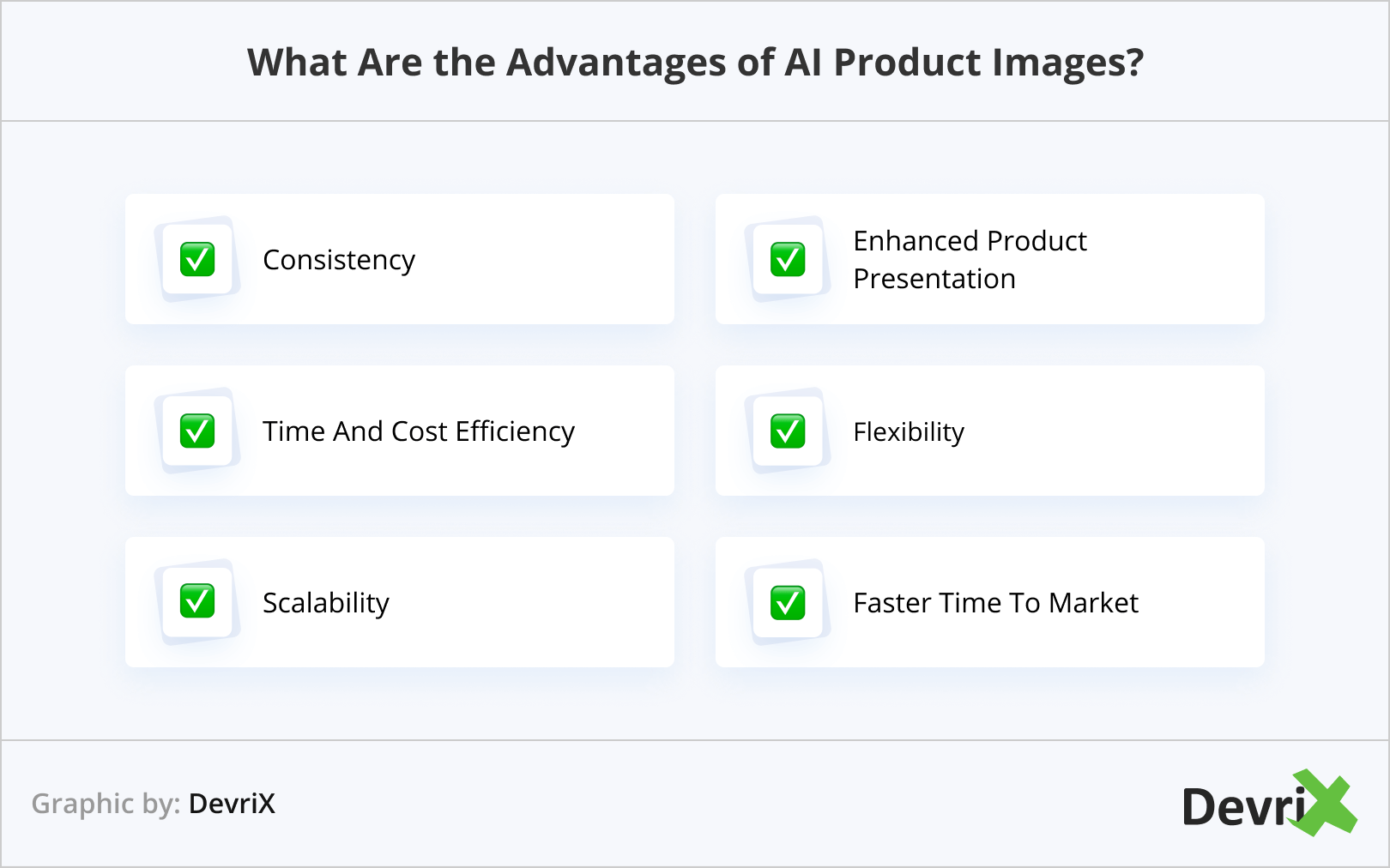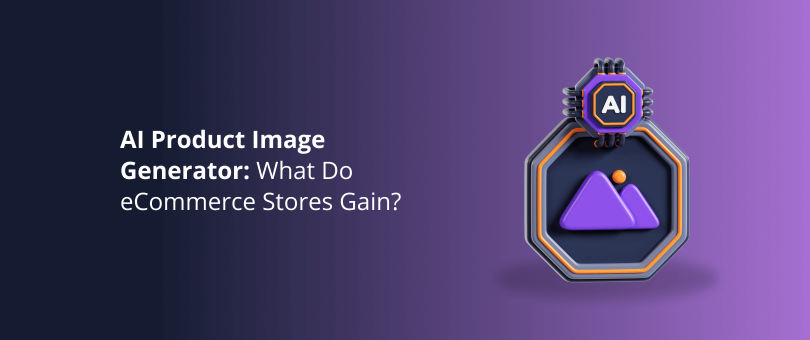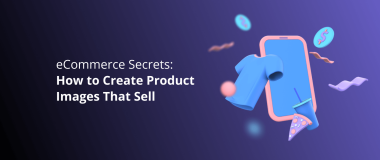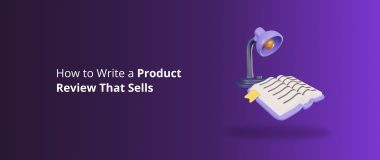The business landscape, as we know it, is changing rapidly. Whether you like it or not, artificial intelligence has found its way into every aspect of our lives, and the way we do business.
What is more, AI is here to stay, and it will only get better. We all know about AI writing assistants, but did you know that AI image generators are also becoming quite advanced.
So much so that perhaps, in the near future, all eCommerce stores will use AI product photography to replace real ones.
If you’re looking to stay ahead in this AI-driven business world, it’s crucial to partner with a WordPress agency that understands the latest trends and technologies. But it is also important to get to know the basics. So, let us find out more about these generators and check if they can really be used for business.
Readers Also Enjoy: eCommerce AR: Why Is it Great For Businesses in 2022? – DevriX
How Does an AI Product Image Generator Work?
The way AI generated product images work is quite simple. You open an AI product image generator of your choice, you type in a description of what you want to visualize, you wait a few seconds, and there you have it – your product image is ready to use.
Naturally, there are dozens of different AI image generators out there, so the results will vary depending on the tool you use. Typically, they offer various styles to choose from, as well as sizes, and other neat features.
Of course, the main distinction point is that some of the tools are completely free, while others require a subscription. The paid ones vary in cost – from $0.99 per month to $62 per month, depending on the features.
Needless to say, your company might decide to invest in its own AI image generating system, although that would be costly. More about that later.
Readers Also Enjoy: eCommerce Secrets: How to Create Product Images That Sell – DevriX
AI Product Photography vs. Real Product Photography
Let us do a quick experiment. Which of these four images do you think is real? We will give you a hint – three of them are AI generated product images.




In case you said that the fourth (last) one was the real product photography, congratulations, you got it right.
However, you can clearly see that artificial intelligence images look totally plausible, and can get the job done for your eCommerce store.
Of course, as we mentioned, AI is still developing, so it is far from perfect. Still, let us review the pros and cons of using AI product photo generators, especially compared to human photographs.
Readers Also Enjoy: How to Use Artificial Intelligence in Ecommerce – DevriX
What Are the Advantages of AI Product Images?

- Consistency
- Time and Cost Efficiency
- Scalability
- Enhanced Product Presentation
- Flexibility
- Faster Time to Market
1. Consistency
Consistency is key, and AI product photography ensures consistent and standardized image quality across all product shots.
By using automated processes, AI can capture product images with the same lighting, angles, and backgrounds, eliminating variations that may arise from human error or changing conditions.
Readers Also Enjoy: What Is AI as a Service? [Beginners Guide in 2022] – DevriX
2. Time and Cost Efficiency
AI product photography can significantly reduce the time and cost associated with traditional photography.
Using automated processes, AI can capture and process multiple product images in a much shorter time frame compared to the time it would take a human photographer. This efficiency translates into cost savings for businesses.
Readers Also Enjoy: How to Reduce Digital Marketing Costs and Maximize Results for Your Brand – DevriX
3. Scalability
Artificial intelligence product photography enables businesses, and eCommerce stores, in particular, to scale their product image production effortlessly.
Whether you have a small inventory or a vast catalog, AI can quickly generate high-quality images for each product, allowing you to handle large volumes of products fast and efficiently.
Readers Also Enjoy: The Importance of Image SEO and How to Do It Right in 2021 – DevriX
4. Enhanced Product Presentation
AI photo generators can optimize product images by automatically adjusting factors like lighting, contrast, and color balance to highlight the features of the product and enhance its visual appeal.
This optimization can lead to more visually appealing product images, which can ultimately attract more customers and increase sales volumes.
Readers Also Enjoy: How to Write a Product Review That Sells? – DevriX
5. Flexibility
AI product photography provides flexibility in terms of image customization. With AI algorithms, it becomes much easier to change backgrounds, add visual effects, or adapt images to different platforms and formats.
This kind of versatility allows you to create tailored product images for specific marketing channels or target audiences.
Readers Also Enjoy: Guide to Implementing an Effective Marketing Strategy – Part 1 – DevriX
6. Faster Time to Market
By streamlining the product photography process, AI enables businesses to bring products to market more quickly.
Such a rapid image production means faster website updates, shorter time between product launches, and improved overall time to market.
Readers Also Enjoy: Product Marketing: The MVP of Launching a New Product – DevriX
What Are the Disadvantages of AI Product Images?

- Lack of Creativity
- Complex Product Capturing
- Limited Adaptability
- Expensive Initial Investment
- Potential for Technical Errors
- Lack of Human Interaction
1. Lack of Creativity
AI algorithms are designed to follow predefined rules and patterns, which can limit their ability to think creatively or capture unique artistic perspectives.
Human photographers often bring their artistic vision and creative flair to product photography, whereas artificial intelligence may produce images that lack the artistic touch or originality.
Readers Also Enjoy: What is the Process For Creating Unique Design For My Site? – DevriX
2. Complex Product Capturing
AI product photography algorithms could struggle with complex or intricate products that require specialized lighting setups or unconventional angles.
Furthermore, it may be challenging for AI to accurately capture the fine details or textures of certain products, resulting in subpar images that do not fully showcase the features of the product.
Readers Also Enjoy: Features vs. Benefits: Which Drives More Sales? – DevriX
3. Limited Adaptability
AI algorithms rely heavily on pre-existing data and patterns. They may struggle when faced with novel or unpredictable scenarios that differ from the training data available to them.
For example, if a product has unique characteristics or is in an unconventional setting, AI may not be able to handle it effectively, leading to inaccuracies or inconsistencies in the images, which on its own, could lead to a negative user experience.
Readers Also Enjoy: Top 22 Common UX Mistakes [And How to Fix Them] – DevriX
4. Expensive Initial Investment
Implementing AI product photography systems requires an initial investment in terms of hardware, software, and infrastructure.
Developing or acquiring AI algorithms, setting up specialized equipment, and training staff on the AI systems can be costly, particularly for small businesses or startups with limited budgets.
What is more, using existing AI image generators can also end up being quite expensive, depending on the amount of images you need to produce.
Readers Also Enjoy: eCommerce Website Redesign: 8 Vital Signs That It’s Time To Do It – DevriX
5. Potential for Technical Errors
Like any other software, AI algorithms can encounter technical errors or bugs that affect the quality of the images produced, making them unusable.
These errors could lead to distorted images, inaccurate color representation, or other issues that require manual intervention or troubleshooting, potentially causing delays or additional costs.
Readers Also Enjoy: 23 Common eCommerce Mistakes To Avoid – DevriX
6. Lack of Human Interaction
AI product photography eliminates the human element from the process. While this can be advantageous in terms of efficiency, it also means that there is no immediate human feedback or decision-making during the image capture process.
This lack of human interaction may result in missed opportunities to adjust or enhance the images based on real-time considerations or artistic judgment.
Readers Also Enjoy: 9 Website Pages You Absolutely Need – DevriX
Conclusion
Using an AI product image generator can be of great help to eCommerce stores. Still, it is most likely that the final verdict is… that it is too early to fully rely on AI to produce images for businesses.
AI generated product images still have a long way to go, until they become 100% reliable, and are able to compete with real-life photographers.
Despite that, it is worth keeping an eye on the development of artificial intelligence image generators, as their capabilities will only get better with time.
One last thing. Did you know that DevriX is a WordPress agency that builds and maintains scalable eCommerce websites? On top of that, we offer business consulting and marketing services.
So, do not hesitate to contact us if you ever need help with your eCommerce website development.


![What Is a Flash Sale_ [Pros & Cons for eCommerce Stores]](https://devrix.com/wp-content/uploads/2023/06/What-Is-a-Flash-Sale_-Pros-Cons-for-eCommerce-Stores-380x160.png)

